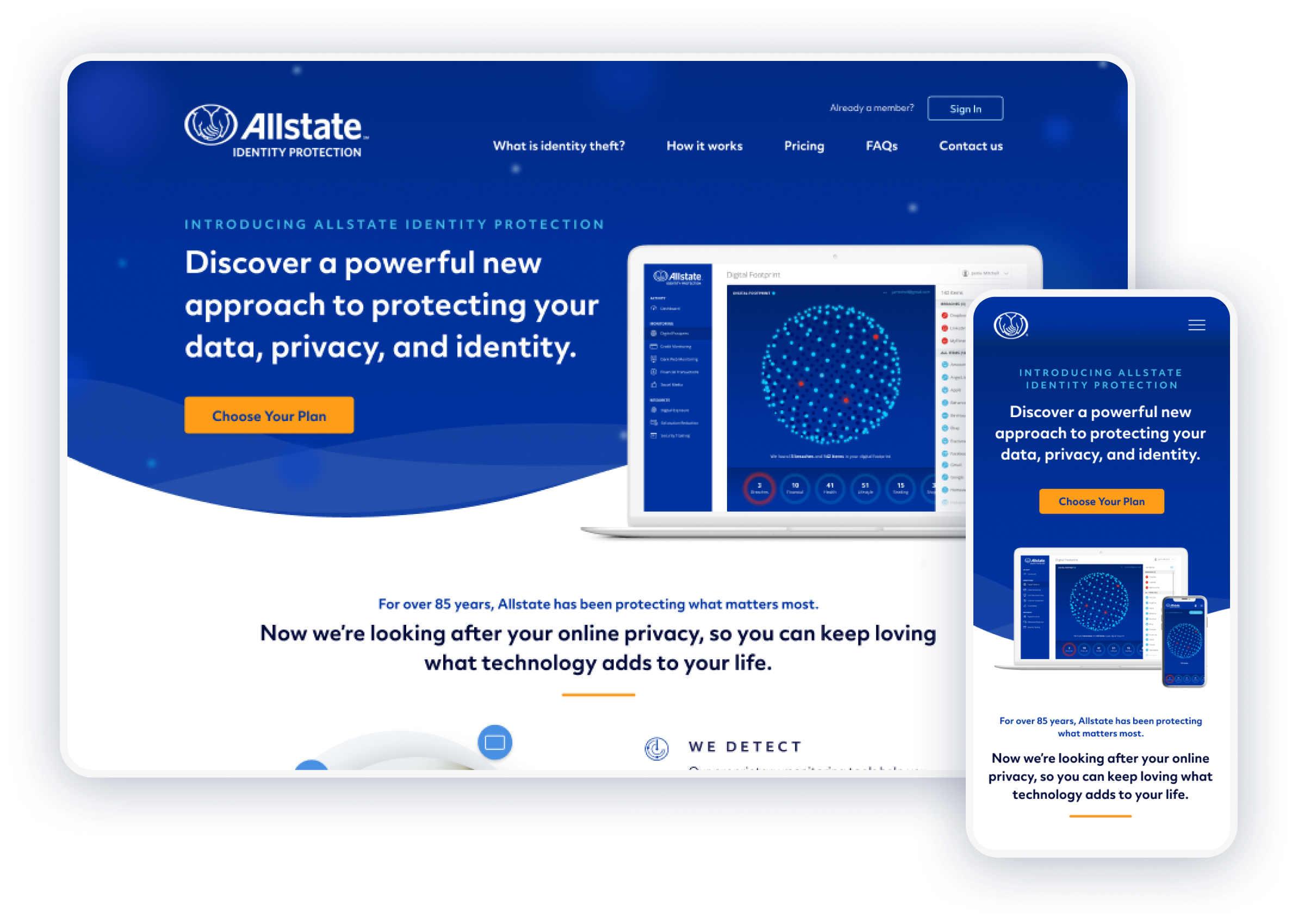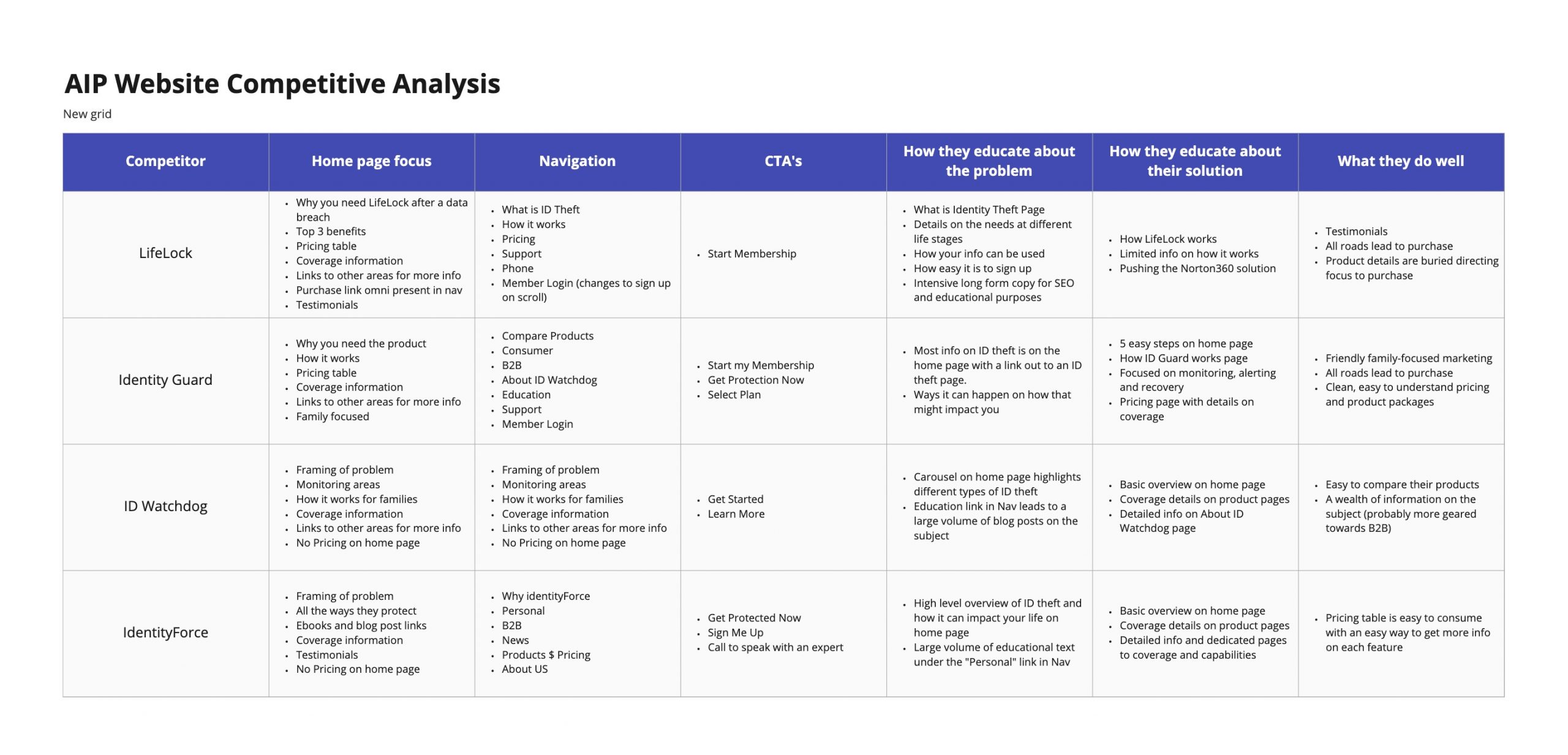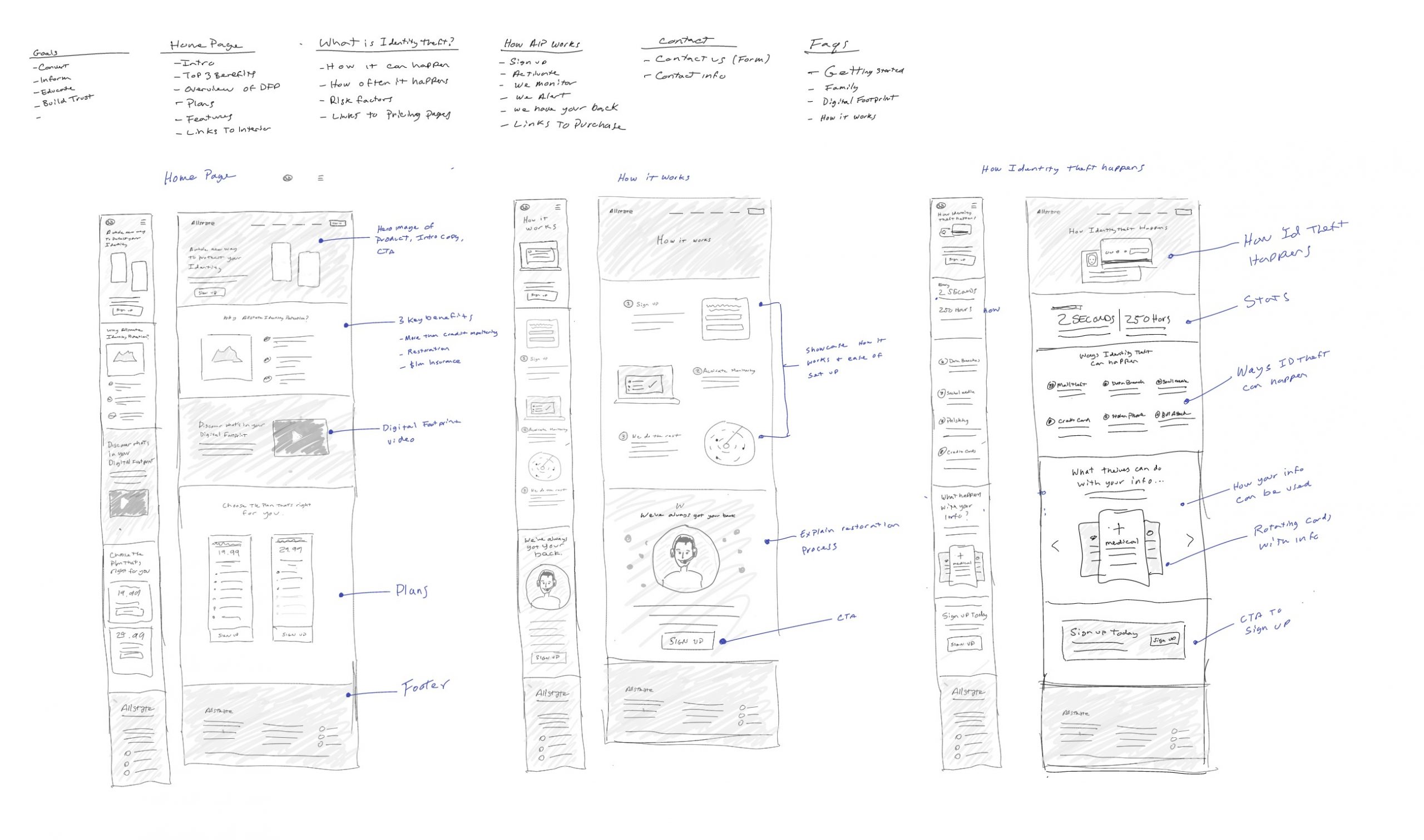Project overview
My Role
Director of Product Design
I worked alongside a junior product designer, a content strategist, and stakeholders from our marketing team to deliver the initial website for Allstate Identity Protection. I was very hands-on during the initial design and rollout of the website managing user studies, constructing the overall UX and architecture, and providing UI and creative direction.
Project goals
Drive user acquisition with a conversion rate over 5% (stretch goal)
Build the first web presence for Allstate Identity Protection
Show all of the benefits of becoming an Allstate Identity Protection customer
Uniquely distinguish the Identity protection product from the property and casualty halo
Research & Insights
Research and Insights
When this project first kicked off, there was not a significant up-front market research endeavor. However, we did have access to some previous work that the Allstate research team had provided us, so we were not starting from scratch. The core data we had access to was a market segment to focus on, “The up and coming family,” the research included some specifics on their understanding of the Identity Protection space and online purchasing habits. With a target audience in place, we analyzed our competitor’s websites to see how they were positioning themselves and some standard best practices we might leverage.
Design Criteria
We then laid out our key design criteria.
- The site should be simple and easy to navigate.
- All roads should lead to a purchase.
- Highlight the benefits without overwhelming.
- Make it clear why Identity Theft is a problem.
- Make it clear how we solve the problem of Identity Theft.
- Highlight the core differentiator, Digital Footprint.
- The pricing table should be easy to consume and get people into the funnel.
Design approach
Design approach
Now that we understood who our audience was, and key design criteria, we started exploring how we might set up the information architecture, site flow, and layout of individual pages. We wanted to make sure we framed up the problem of Identity Theft and how Allstate solves it better, so we made those individual pages to educate best.
High fidelity designs
Home Page
The home page’s focus was to quickly display the product’s benefits and pricing so the consumer could easily make a decision and get into the purchase funnel. A modular approach was taken with each section to move or swap out for A/B testing easily.
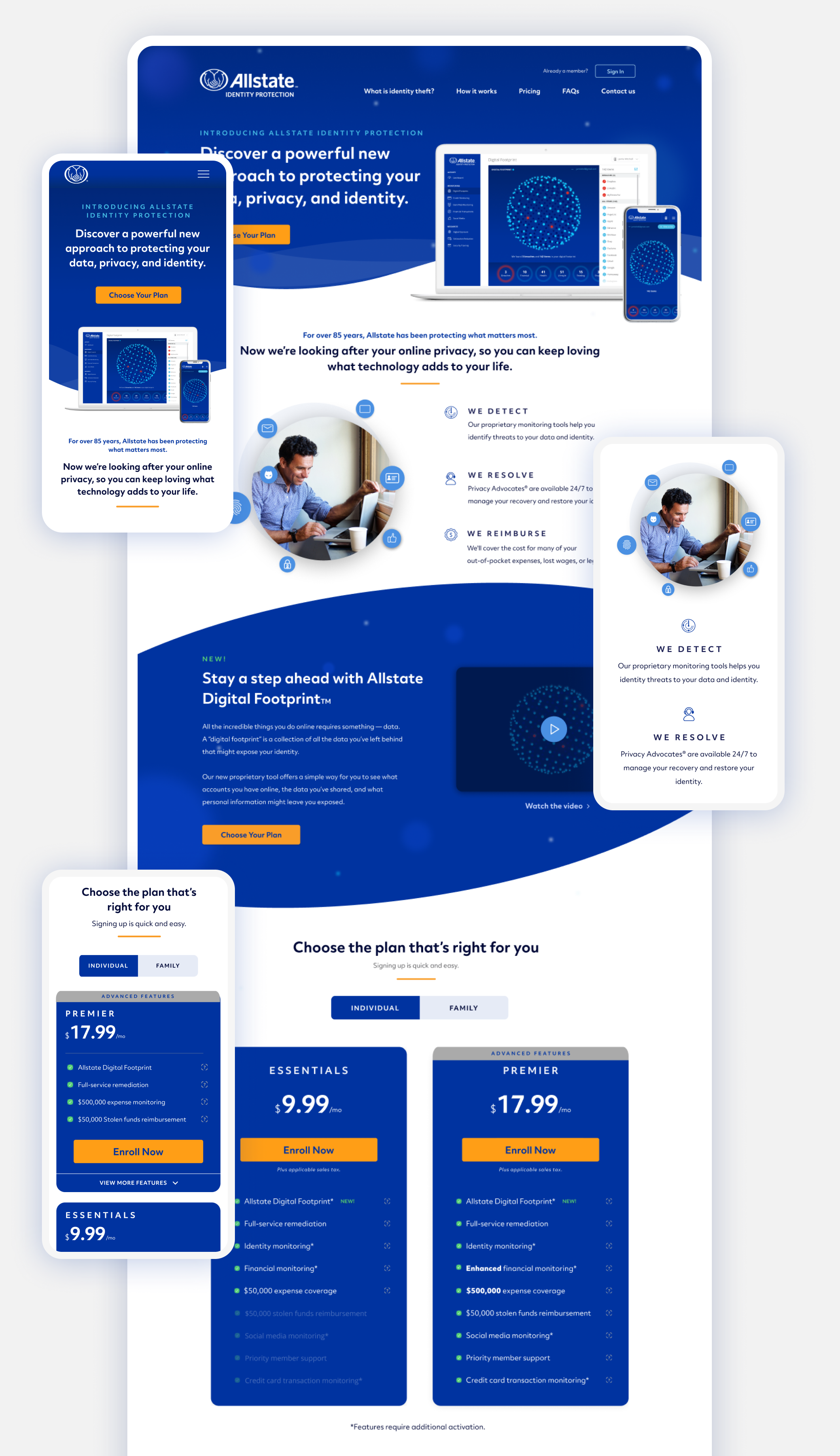
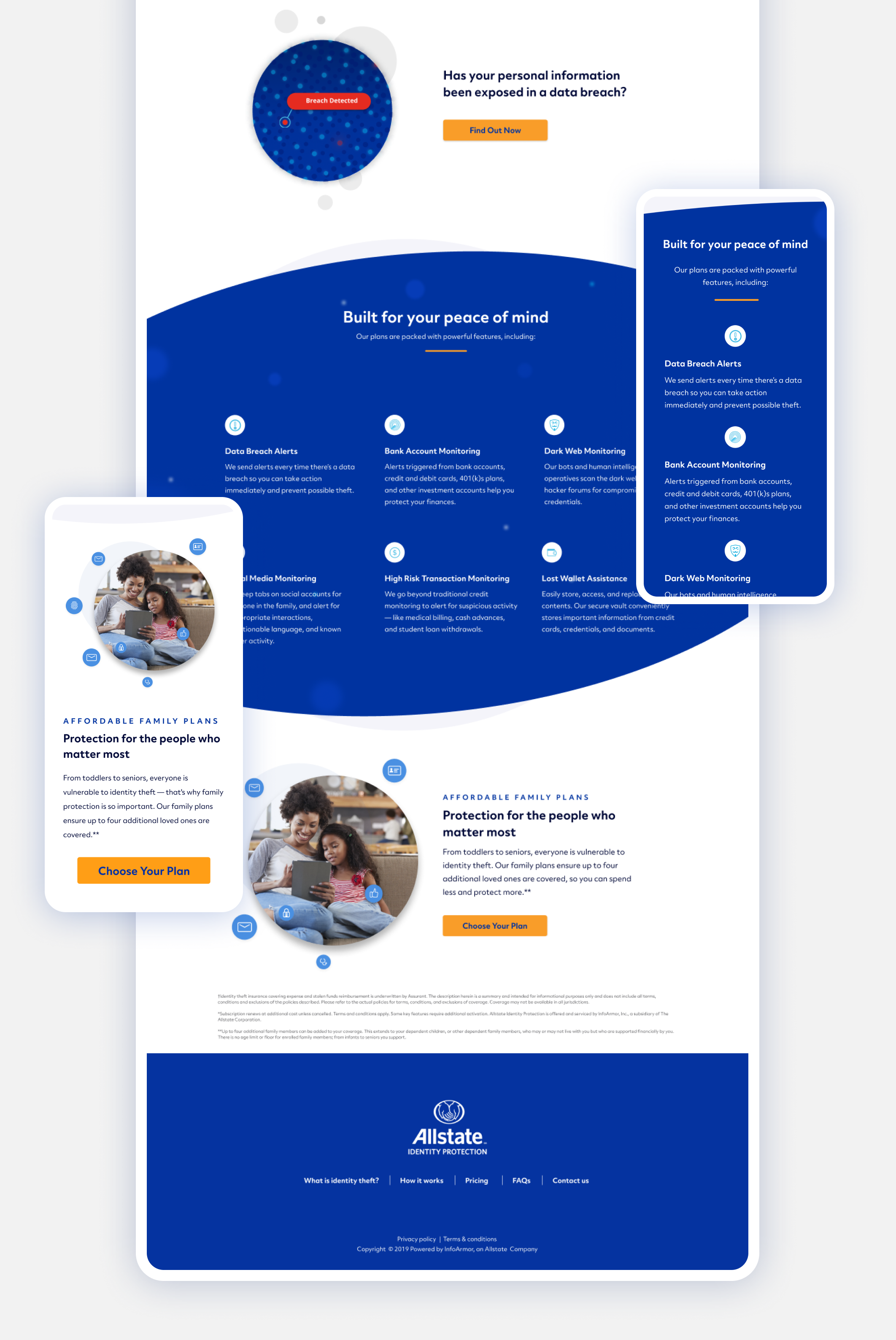
Interior pages
The purpose and focus of the interior pages is to educate the consumer on the problem of identity theft and how we can help. These pages deliver a wealth of information for those looking to explore and learn more, while always giving them an easy way to get back into the purchase funnel.
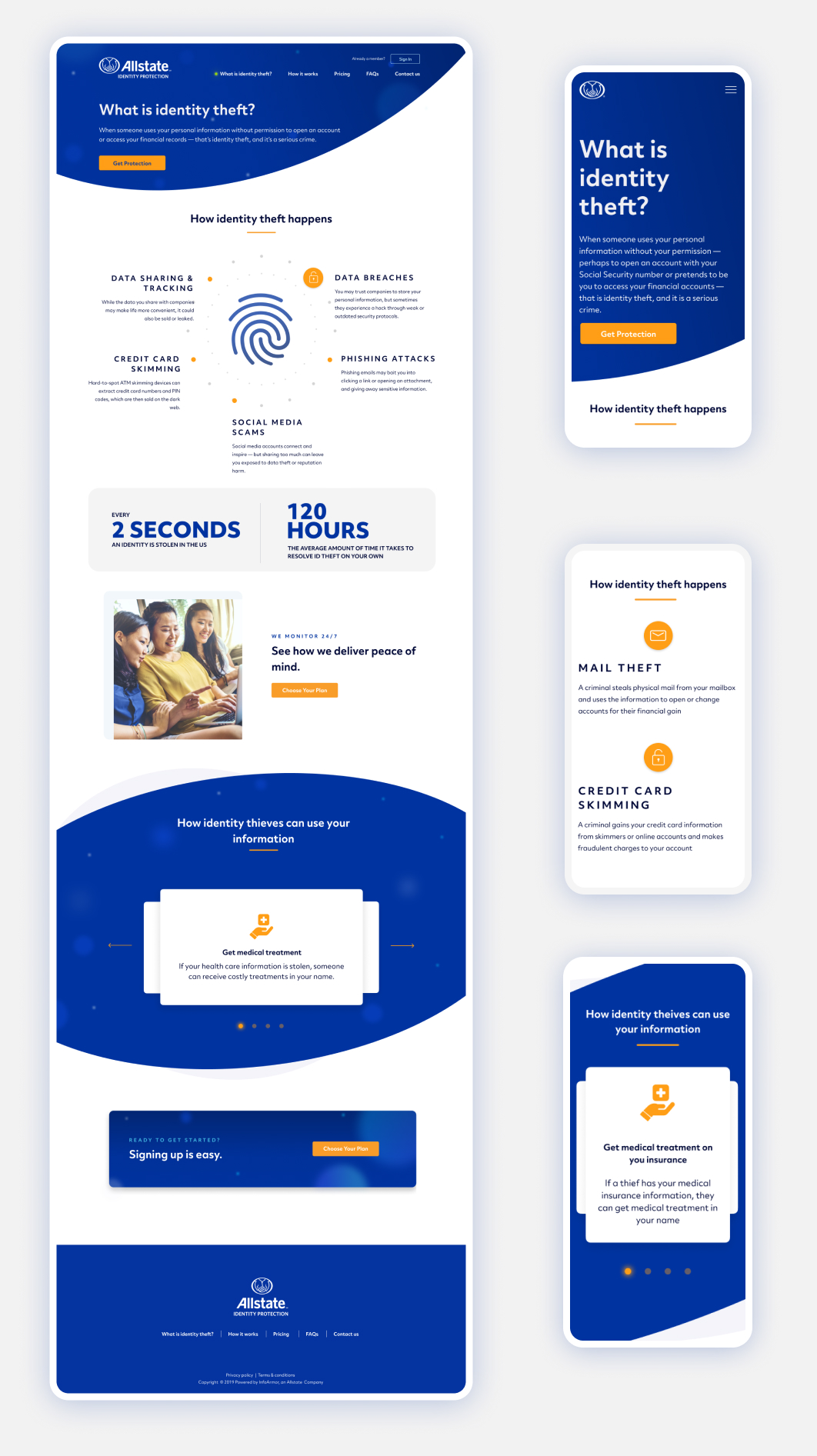
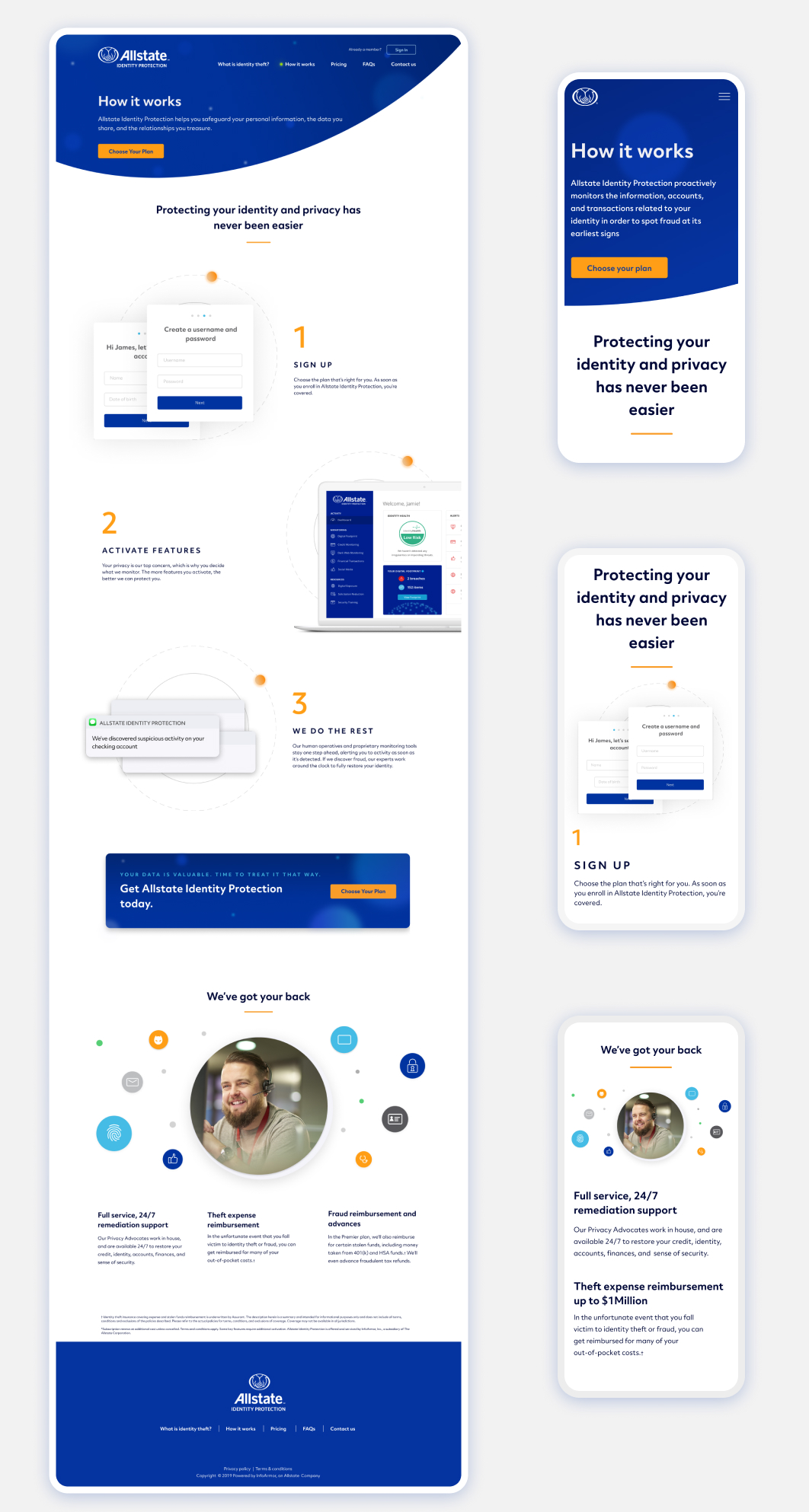
Results
Expanded offerings from Allstate
With the launch of the Allstate Identity Protection website, the insurance giant now had a new, direct to consumer, channel to sell a new product through. In addition, it offered a new way for consumers to engage with the Allstate brand. Consumers could now purchase identity protection directly from Allstate without the help of an agent
Customers began to trickle in
As this was a brand new channel for Allstate and our product had not yet been fully optimized for a direct to consumer model, we launched the website as an extended “soft-launch”. Allstate put very little marketing behind the initial rollout so we had some time to address product issues and iron out the kinks in our sales funnel. Never the less, we still converted over 2000 customers in the first few months with a conversion rate of around 1.2%.
A new sales funnel
One of the biggest outcomes of our initial release of the AIP website was that we now had our sales funnel stood up, so it gave us an opportunity to experiment and optimize. As Allstate put more dollars towards marketing the product, we were able to tweak the sign-up and purchase flow to reduce barriers and purchase objections, ultimately leading to over 200,000 sign-ups in 2020.
